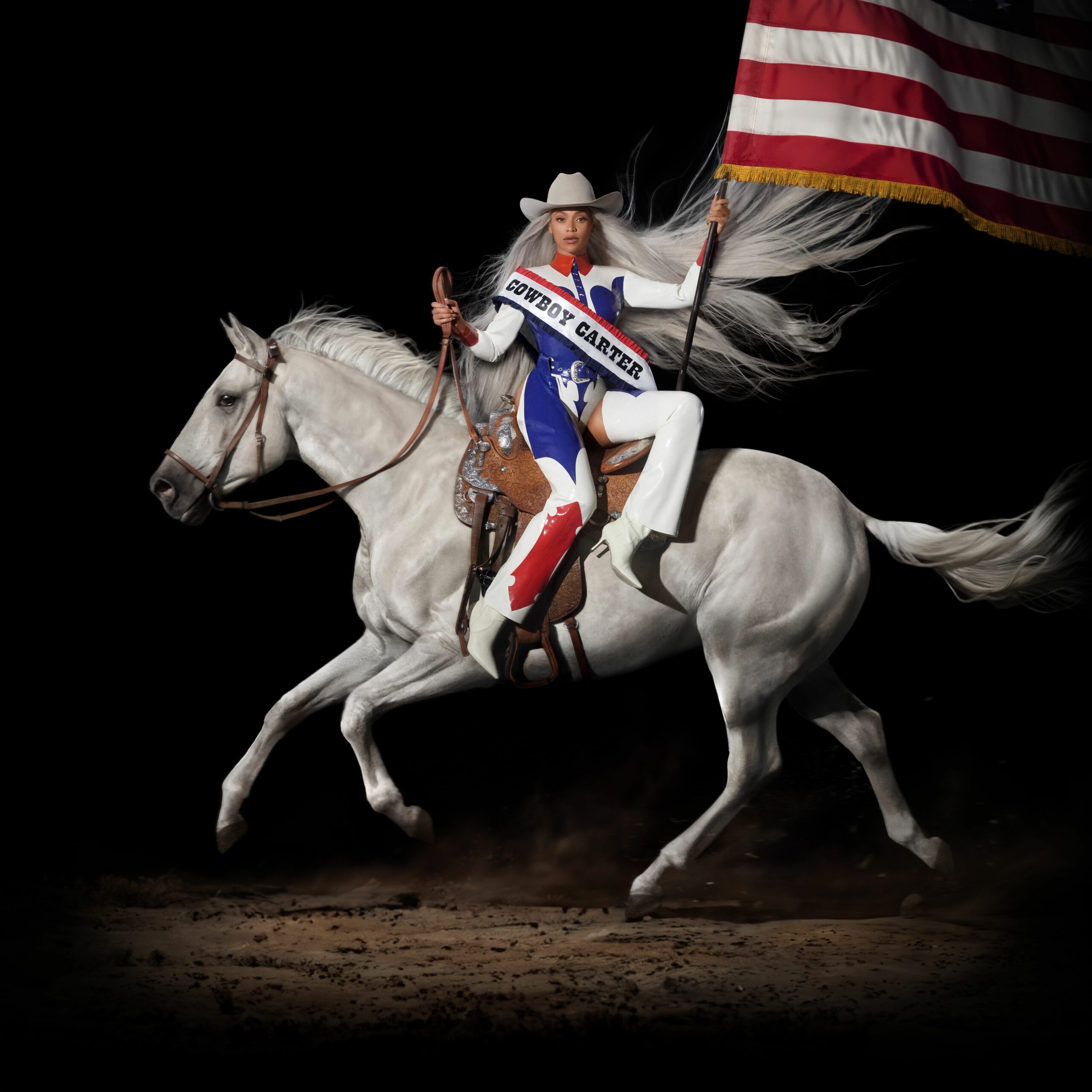Beyoncé’s Cowboy Carter, also stylized as Act II: Cowboy Carter, marks another successful era for the veteran performer as it earned the top spot in the Billboard Country Albums chart. This made her the first Black woman to achieve the no. 1 spot since the chart’s first issue in 1964. It also continues her streak of hitting the top of the Billboard 200 for every mainstream album release.
Cowboy Carter is the second act in her planned trilogy of conceptual albums initially developed during the height of the COVID-19 pandemic. Its predecessor, Renaissance, kicked off the series and culminated in a record-breaking world tour grossing $179.3 million in a month. With each chapter meant to have a distinctive sound while maintaining a throughline between albums, Cowboy Carter takes the listener to the world of country music while carrying themes from the first album. This is more evident in “Pure/Honey” and “Sweet Honey Buckin’ tracks, but it’s fascinating to see the visual and auditory elements that inform the new album’s identity.
The visual design of Cowboy Carter
Watch the official visualizer for “Texas Hold ‘Em” by Beyoncé on YouTube:
Beyoncé has used conceptual albums to create long-arching narratives in the last decade. Cowboy Carter elevates this goal by highlighting the artist’s background and the genre’s roots. Just as Renaissance embraced the Black-led origins of vogue and house culture, this new step sees the songstress put on her spurs and accessories to remind the listener that country music originated with African Americans before being coopted and popularized by their White counterparts.
While the album is sonically distinct, it also focuses on visuals to reaffirm this identity. Although the drops on visual aspects are sparse, each one released feels purposeful and carefully curated with the audio to realize the concept entirely. Queen Bey was born in Texas and unapologetically represents this in a way that is immediately recognizable while still distinctly “Beyoncé.” From the first visualizer paired with “Texas Hold ‘Em,” she marries the glitz of ballroom from the previous album and infuses it with cowboy motifs that still match the queen bee aesthetic she has cultivated over the years. From her sleek gun holster to her crystal-embedded eyewear, every piece is not just a costume but a part of the imagery that encapsulates the history blended into the entire album.
Music and fashion have long served to inspire each other, and Beyoncé doesn’t shy away from utilizing this in her new era. In her visualizer, she dons a pair akin to the A24S and 65ZS Prada sunglasses but modified to have a decorative snake. The stylization of branded frames is a running theme between albums to celebrate decadence and reiterate how she plans to create her lane in a corner of the industry too often boxed into trucks and flannel. Instead of stripping down the flash, she weaves it into the country aesthetic: cowboy hat, carefully tailored chaps, and all.
The sounds of history from Beyonce’s lens
Watch the official music video for “Beywatch” by Beyoncé on YouTube:
Although the visuals alone are enough to dissect for hours, Cowboy Carter shines in paying homage to classic country while redefining how it is categorized. The album plays with different subgenres to challenge the stereotypical notion of what this type of music is meant to sound like. As mentioned by the legendary Linda Martell in the intro to “Spaghettii” and “The Linda Martell Show” as a tee-up to “Ya Ya,” Beyoncé is not interested in confining herself to the traditional image of country. Instead, she embraces the genre’s future by reinventing sounds with rap, dance, trap, folk, and opera elements.
It’s a call to action to challenge the modern perception of a country star, reminding audiences that the Black community started and revolutionized this sound. Instead of stepping back, it’s a move forward by marrying it with other sounds more commonly associated with Beyoncé and contemporaries like Shaboozy (who features heavily on the album with buttery smooth vocals.) Every track glides effortlessly into the next, urging the listener to experience the album in order without any pauses. It’s classic country storytelling through the lens of an artist who aims to send a more significant message.
This is further seen in the release of the “Bodyguard” video, which saw Beyoncé referencing Pamela Anderson visually and using a “bang” flag pistol that instead says “vote.” The music video comes hot on the heels of her Kamala Harris endorsement at a rally in her hometown, Houston. The statement is loud and clear, with imagery, lyricism, and instrumentation pointing to the next stage of Afrofuturism and reclamation that Beyonce brandished at her infamous FedEx Field concert. The album’s success has already been divisive, but the implications are anything but.






